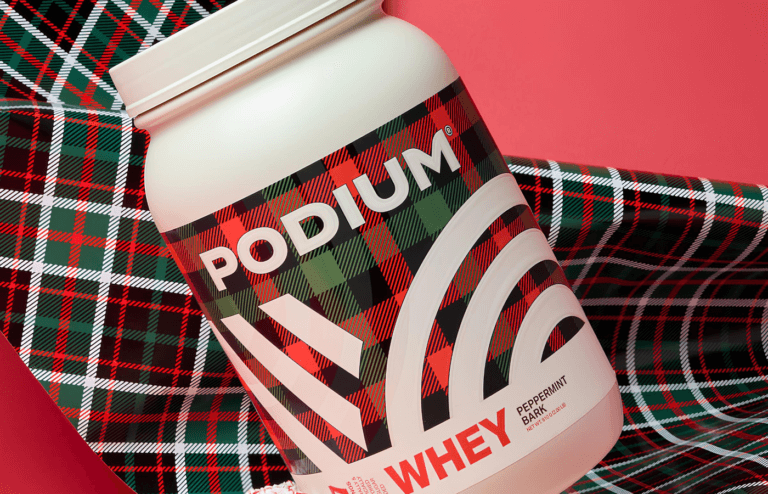If you’re serious about building muscle, you know you need to focus on your diet as well as your workout regime. Historically, muscle building has tended to focus on protein “quantity” over protein “quality” but in recent years being a flexitarian or “casual vegetarian” has become increasingly popular, here is our flexitarian guide to building muscle.
WHAT IS A FLEXITARIAN?
The aim is to mainly eat plant-based foods with occasional meat, fish and dairy. A flexitarian diet has no strict rules, think of it as a lifestyle choice that improves overall well-being by adding more plant-based foods to your diet like lentils, beans, peas, nuts, and seeds.
Although a flexitarian diet can reduce the risk of cancer, heart disease, and diabetes, it does need to be well planned to avoid vitamin and mineral deficiencies. The very nature of a flexitarian diet is flexibility! You’ll focus on eating more vegetarian meals; however, this might mean more time in the kitchen to ensure you are meeting 100% of your nutrition and energy needs.
HOW MUCH PROTEIN YOU NEED?
Protein is a hot topic, but you may need less protein than you actually think! A good target is 0.73 grams of protein per pound of body weight per day. A guy or gal weighting in at 150 pounds would need 110 grams of protein per day in their diet.
COMPLETE VS INCOMPLETE PROTEINS
Protein is a vital nutrient responsible for the growth, maintenance, and repair of our bodies. So, we must ensure we eat enough high-quality protein every day to keep our bodies healthy. If your aim is to build lean muscle mass, try to eat 20-30 grams of protein at each main meal.
There are nine essential amino acids that our body needs but cannot make itself, we get them from the food we eat. When you eat a protein source containing all nine essential amino acids, it is called a ‘complete’ protein. Animal protein sources are complete, and they include fish, poultry, and red meat.
Plant sources of protein, with, the exception of soya and quinoa, are ‘incomplete.’ This is because plant protein sources tend to lack at least one of the nine essential amino acids. So how can you ensure that you consume all the essential amino acids when eating plant proteins? The answer is protein combining.
WHAT IS PROTEIN COMBINING?

Protein combining means eating a selection of incomplete plant protein sources, this means your body gets all nine essential amino acids. Try combining plant-based foods to create a complete protein source such as:
- Rice and beans
- Nut butters and whole grain bread
- Hummus and pita
- Oats and almonds
THE BEST PLANT-BASED PROTEIN SOURCES

Plant-based foods are nutritious and versatile, as well as providing other nutrients such as fiber, vitamins, and minerals.
Try incorporating soy products like tofu and tempeh in your diet, which have up to 10-12 grams of protein per cup. Beans and lentils provide up to 15 grams of protein per cup when cooked. Wholegrains with the highest protein levels are quinoa and whole wheat pasta (with 8 grams per cup).
Don’t forget to sprinkle nuts and seeds on to salads, smoothies, and yogurt as nuts and seeds also contribute a good amount of protein. Try hemp seeds, almonds, and nut butters.
Plan your meals, consuming protein from a variety of sources helps you get a range of nutrients in your diet.
PROTEIN ALONE IS NOT ENOUGH

Our body is like a machine, constantly renewing and repairing tissue and cells. Help make the most of your workouts and recovery, by ensuring you have enough vitamins and minerals in your diet to support muscle development and growth.
- Iron helps to transport oxygen in the blood, this provides energy to your body during workouts. Think beans, lentils, and spinach.
- Magnesium is an important mineral that helps your muscles repair themselves, found in nuts, seeds and wholegrains.
- Vitamin D deficiency is linked to poor muscle health and development, sunshine is key!
- Leucine is one of the nine essential amino acids our body cannot make; it is essential for muscle growth. Try soybeans, oats, and peanuts.
- Calcium is essential for bone growth and muscle contractions, abundant in leafy green vegetables.
- Zinc boosts immunity and improves muscle recovery, found in chickpeas, lentils, and beans.
- Creatine is a type of amino acid that occurs naturally in your body and although it does not directly improve the growth of muscles it helps you work out at a higher intensity. Often used as a supplement, or found in walnuts, almonds, seaweed, and beans.
PULLING IT ALL TOGETHER
Being flexitarian is all about flexibility, get creative and experiment with new ingredients and combinations that you have never tried before! Meat, fish, poultry, and dairy are not off limits but aim to add more plant-based foods to your diet.
A good daily protein target is 0.73 grams of protein per pound of body weight. If your aim is to build lean muscle mass, try to eat 20-30 grams of protein at each main meal.
Help make the most of your workouts and recovery, by ensuring you have enough vitamins and minerals in your diet to support muscle development and growth.
Claire Cole is the founder of www.movementforminds.com, a fully qualified PT designing exercise programmes to improve mental & physical wellbeing.
You might also be interested in this article about plant base protein myths.






